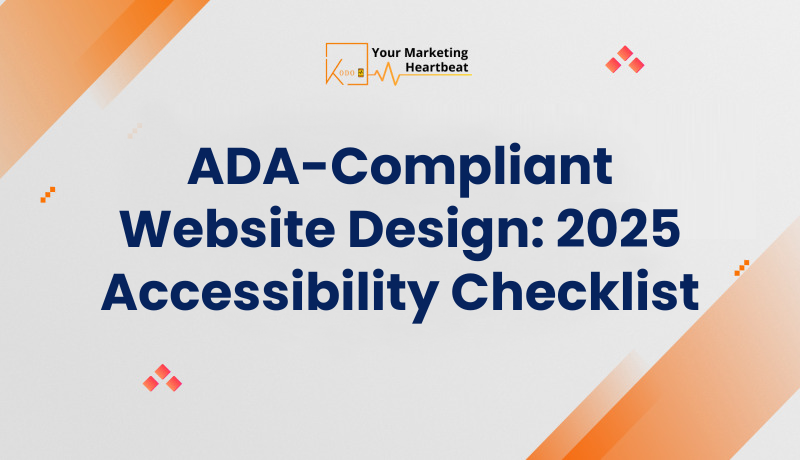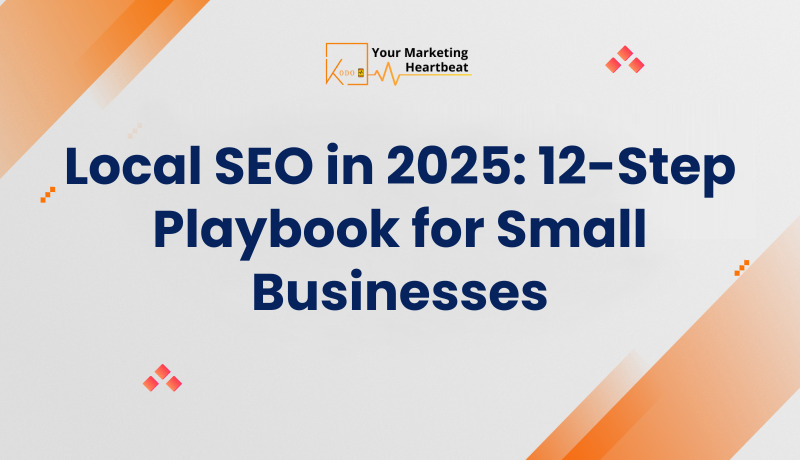ADA-Compliant Website Design: 2025 Accessibility Checklist
In today’s digital landscape, ensuring that your website is accessible to everyone, including individuals with disabilities, is not just a legal requirement but also a moral imperative. As we move towards 2025, the importance of adhering to the Americans with Disabilities Act (ADA) and the Web Content Accessibility Guidelines (WCAG) becomes even more pronounced. This article will provide a comprehensive checklist to help you create an ADA-compliant website that enhances user experience for all visitors.
Understanding ADA Compliance
The Americans with Disabilities Act (ADA) was enacted to prevent discrimination against individuals with disabilities. Although the law was signed into effect in 1990, the rapid evolution of technology has led to ongoing discussions about its implications for digital content, particularly websites. As more businesses establish their online presence, understanding ADA compliance in the digital realm is crucial.
Why ADA Compliance Matters
- Legal Obligations: Non-compliance can result in lawsuits and hefty fines. In recent years, there has been a significant increase in legal actions against businesses lacking accessible websites.
- Inclusivity: Making your website accessible ensures that everyone, regardless of ability, can engage with your content. This fosters a more inclusive society.
- Enhanced User Experience: Accessibility features often improve the overall user experience, benefiting all visitors, not just those with disabilities.
The Connection Between ADA and WCAG
The WCAG provides a set of guidelines that help organizations create accessible web content. While the ADA does not explicitly mention websites, courts have interpreted it to include digital spaces. Therefore, adhering to WCAG guidelines is crucial for achieving ADA compliance.
Key WCAG Principles
- Perceivable: Information must be presented in a way that users can perceive, such as providing text alternatives for images.
- Operable: Users must be able to navigate and interact with the website using various methods, including keyboard navigation.
- Understandable: Content should be easy to read and comprehend, avoiding complex jargon.
- Robust: Websites should be compatible with various user agents, including assistive technologies.
2025 ADA Website Compliance Checklist
To ensure your website meets ADA standards by 2025, consider the following checklist:
1. Conduct an Accessibility Audit
Regular audits are essential to identify areas that need improvement. This process involves evaluating your website against WCAG guidelines and ADA requirements.
- Tools for Audits: Utilize tools like WAVE, Axe, or Lighthouse to assess your website’s accessibility.
- Manual Testing: Consider manual testing with real users who have disabilities to gain insights into their experiences.
2. Implement WCAG 2.2 Guidelines
The latest version of WCAG includes enhancements that address mobile accessibility and cognitive disabilities.
- Focus on Mobile: Ensure that your website is responsive and accessible on mobile devices.
- Cognitive Accessibility: Simplify content and navigation to cater to users with cognitive disabilities.
3. Optimize for Screen Readers
Screen readers are essential tools for visually impaired users. Optimizing your website for these tools can significantly enhance accessibility.
- Use Semantic HTML: Properly structure your HTML to ensure that screen readers can interpret content correctly.
- Alt Text for Images: Provide descriptive alt text for images, allowing screen readers to convey relevant information to users.
4. Ensure Keyboard Navigation
Many users rely on keyboard navigation instead of a mouse. Make sure all interactive elements are accessible via keyboard.
- Tab Order: Maintain a logical tab order for navigating through form fields and links.
- Skip Links: Implement “skip to content” links to allow users to bypass repetitive navigation menus.
5. Use Color Contrast Effectively
Color contrast is crucial for users with visual impairments. Ensure that text is easily readable against its background.
- Contrast Ratio: Aim for a contrast ratio of at least 4.5:1 for normal text and 3:1 for large text.
- Avoid Color-Only Indicators: Do not rely solely on color to convey information; use text labels or symbols as well.
6. Create Accessible Forms
Forms are often challenging for users with disabilities. Simplifying form design can enhance usability.
- Label Elements: Ensure that all form fields have associated labels.
- Error Messages: Provide clear error messages and instructions for correcting mistakes.
7. Provide Video Captions and Transcripts
Videos are a popular form of content, but they can be inaccessible to users with hearing impairments.
- Closed Captions: Include closed captions for all video content.
- Transcripts: Provide transcripts for audio content, allowing users to access information in different formats.
8. Regularly Update Content
Maintaining an accessible website is an ongoing process. Regular updates are essential to ensure continued compliance.
- Content Management: Implement a content management system that allows for easy updates and accessibility checks.
- Training Staff: Educate your team about accessibility best practices to ensure everyone contributes to maintaining compliance.
9. Utilize Accessibility Widgets
Consider using accessibility widgets that provide users with customizable options to enhance their experience.
- Font Resizing: Allow users to adjust font sizes for readability.
- Color Filters: Provide options for users to change color schemes for better visibility.
10. Monitor User Feedback
Encourage users to provide feedback about their experience on your website.
- Feedback Forms: Implement forms specifically for accessibility feedback.
- User Testing: Engage users with disabilities in testing sessions to gather insights on their experiences.
11. Stay Informed About Legal Changes
The landscape of accessibility laws is constantly evolving. Stay updated on changes to the ADA and WCAG guidelines.
- Subscribe to Updates: Follow organizations that focus on disability rights and accessibility for the latest news.
- Attend Workshops: Participate in workshops and training sessions to stay informed about best practices.
12. Collaborate with Accessibility Experts
If your team lacks expertise in accessibility, consider collaborating with professionals who specialize in this field.
- Consultants: Hire accessibility consultants to conduct audits and provide recommendations.
- Partnerships: Collaborate with organizations that advocate for disability rights to gain insights and support.
Conclusion
Creating an ADA-compliant website is not just a legal obligation; it’s an opportunity to foster inclusivity and improve user experience for all. By following the 2025 accessibility checklist outlined above, you can ensure that your website meets the necessary standards and provides a welcoming environment for everyone. Remember, accessibility is an ongoing journey, and staying committed to continuous improvement is key to success.
Additional Resources
For further reading and resources on ADA compliance and accessibility, consider visiting:
By prioritizing accessibility, you not only comply with legal requirements but also demonstrate a commitment to creating an inclusive online world. Let’s work together to build a more accessible future!




April 23, 2024